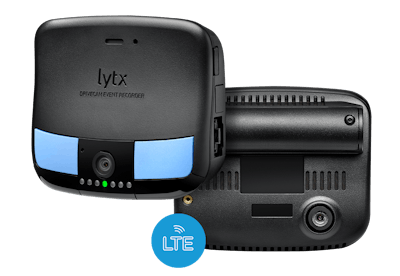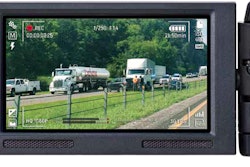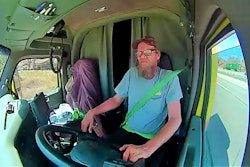A group of owner-operators was newly facing a policy whereby their trucks would be outfitted with cameras that captured only forward-facing views of the road. In the words of the owner-operator who queried Overdrive about the particular situation, one that has been common for a variety of operators around the nation over the last half-decade as fleets have turned to cameras to mitigate the risk of outsize verdict in civil litigation, “We understand that, as leased operators, the carrier has every right to install and monitor any electronics they please in our tractors according to our lease agreement.”
Yet, the operator added, “We are looking for clarity as to a few concerns.”
Chief among them was the concern of additional liability that may exist with the installation of a camera — the operator envisioned the potential for a “blooper reel” of “all of our minor infractions that could be used against us in case of a serious non-related incident.” In essence, he and others leased with this particular carrier envisioned that time-honored worst-case scenario of what “otherwise would be a not-at-fault accident” turned against them after video subpoenaed “by a trial lawyer or zealous prosecutor looking for a ‘pattern of negligence.'”
The operators were told these were Lytx cameras — you’ll recall Lytx as owner of the DriveCam systems a lot of early-adopter fleets started putting in almost a decade ago and turning plenty of heads for the dual-cam approach, with a camera not only on the road ahead but also on the driver. The inside-the-cab view in Lytx’s system, though, doesn’t have to be utilized, and in this particular case the leased group of operators were told that it would not be. They were also told that the system would be utilized only for critical-event recording.
But the fleet was less-than-helpful when it came to further questions about the system itself, so I reached out to Lytx for some answers.
What triggers the recorder to begin recording, for how long does it record and how is this transmitted and stored?
The Lytx rep called them “exception-based events” that are “triggered by exceeding an accelerometer threshold.” Standard events — these could hard braking events, impacts with other vehicles, quick swerves and the like — in this particular system are 12 seconds long, capturing moments before and after the event and transmitting them “via the cloud to each client’s dashboard.”
Routine video captured by the camera eye is stored only on the device itself in the standard system, and the company is working on the ability for companies to adjust the length of time such video remains within the device. That is, carriers and/or owner-ops “will be able to set the expiration of recording time on the device and in their account,” the Lytx rep said. For the standard system, only “exception-based events are sent and stored in the cloud. Only authorized users have access to the content through a secure online interface.”
The capture of audio, which this particular owner-operator’s fleet was apparently preparing the leased group for, is possible, but it is also configurable — it can be turned off and not included. As the Lytx rep said, “it does provide additional context” to any critical event.
Does the device recognize speed limit and other signs and store ‘events’ related to compliance with those signs?
Lytx’s video system does in fact come with so-called “machine vision” and “artificial intelligence” technology, to a point. The company rep spoke of the capabilities as MV+AI, as featured on its latest DriveCam SF300 Event Recorder. Capabilities therein include the ability to “proactively detect patterns of distracted driving and other high-risk behaviors,” she said. “The behaviors MV+AI is capable of picking up include: rolling stop, lane departure, following distance and critical distance outside of the vehicle, and [use of a] handheld device,” lack of a seatbelt and food or drink distraction. Also — if the fleet wants to detect instances of a driver smoking in the truck in contravention of a policy against that, the MV+AI can pick that up.
In our owner-operator’s case, a lot of these are moot given the forward-facing nature of the fleet’s camera strategy, and the Lytx rep emphasized that use of this particular aspect of the newest SF300 recorder is entirely optional. At once, “If inward-lens recording is off, then MV+AI can identify the behavior, but will not record video” of it actually happening. She likened it to the way our phone cameras can read a QR code without taking a photo.
 Read more about Lytx’s DriveCam SF300 via this link to the Lytx website.
Read more about Lytx’s DriveCam SF300 via this link to the Lytx website.Forward cams, though, paired with MV+AI in Lytx system do in fact look for STOP signs and there is a so-called “Rolling Stop” trigger to capture events. “When a driver approaches an intersection, machine-vision scans to identify a stop sign and, if detected, monitors the vehicle’s speed through the intersection. If the vehicle fails to come to a complete stop at 3 mph or more, video of the event is captured and can be used for coaching.”
“MV+AI is not actively looking at other roadway signs,” the rep said.
Regular readers may well remember our “Fatigue’s Fast Track” feature series a few years ago looking at the advancements being made in this particular area. Nothing material has particularly changed about interest in the technical ability to monitor and/or assist a driver in a proactive way with technology. You can read more about then-current dual-cam providers’ advancements at this link.
What about liability?
Most every camera user I’ve ever talked to has at least one story about how it saved him or her a likely hassle in a situation where the circumstances of something that happened in front of, beside or even behind the truck were made clear by the evidence a camera can provide. Driver exoneration is a fundamental selling point for the makers of these devices and systems.
But this group of operators worried about the opposite — liability — and fundamental issues of trust with regard to the control of video recorded, given the potential amount of that video. There is a capability within most of these systems that began to come of age around the time we were working on the Fatigue’s Fast Track series, with several 2016 announcements of “always on” recording options given improved ability to store large reams of data in the cloud and/or elsewhere. That option remains viable in Lytx’s systems and those of others today.
“Fleets make the decision as to whether or not they want this feature activated – turned off or on – based on their needs,” the Lytx rep said.
Video testimony from two attorneys the company pointed to seem to suggest a different route for any over-the-road company large or small considering such extended recording. Attorney Douglas Marcello emphasized the “moment of truth” aspect of the 10-15 seconds around the accident often as key to making a decision to fight a claim, to resist settlement, to prove the driver did nothing wrong, whatever the case may be.
“With more video,” said attorney Vanessa Herzog, comes “more to manage,” ultimately — including I imagine potential liability.
As I told the owner-operator who reached out about his situation, ultimately it comes down to the question of trust I brought up earlier. If you trust the fleet to properly handle recorded incidents, and there’s not a huge amount of video being stored in the cloud or on the device in your truck in perpetuity, any increase in liability is probably minimal, if anything.
As for that operator, he came down ultimately to this:
It seems that 90 percent of what this technology does is good, and it protects the liability of the driver. We should be relieved that there is no driver-facing side because that only hurts us. It also seems like there have been abuses of it that have made it to court and hurt drivers, but most fleets have their parameters set to eliminate the preservation of those “splitting hairs” videos because they have far more financial “skin in the game” than us.
Others might counter that the interior camera can at least be a tool in providing context, too, as with audio, that might help exonerate a driver, too.
And the owner-operator went on, “As we now deal with the clumsy corporate mandate to have these things put in … we each view our relationship with our carrier differently.”
Ultimately, the decision to stay with a fleet or pursue other opportunities is yours, as this owner-operator knows. If you’ve had to make the decision voiced in the title of this post, what was your tack in the end?










